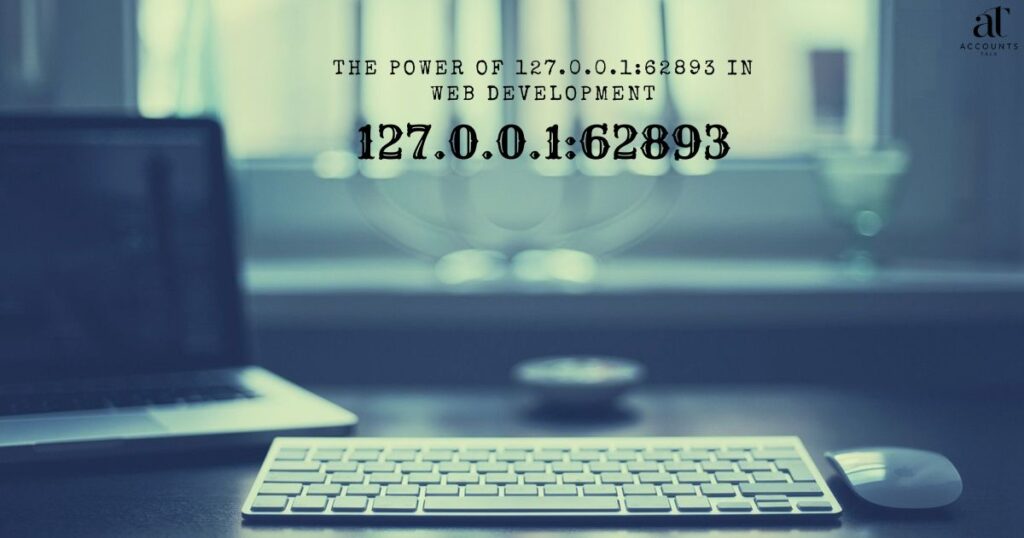When working with network configurations, it’s important to understand the concept of localhost. Localhost is the primary IPv4 address specified numerically as 127.0.0.1, port 62893 and acts as an input host for any given address to the computer.
This loopback address allows a device to connect to and communicate with itself, which is useful for testing and development purposes. In contrast, an IPv6 address is an Internet Protocol v6 sequence with the number sequence ::1, which serves a similar purpose in IPv6 networks.
Both localhost addresses play crucial roles in network diagnostics, software development, and local service testing.
What is 127.0.0.1? The Localhost IP Address Unveiled

At its core, 127.0.0.1 is the localhost IP address, a fundamental concept in networking that serves as your computer’s digital home base. Think of it as your machine’s internal communication endpoint, a loopback mechanism that allows networked applications to talk to themselves without venturing out onto the wider internet.
The Internet Engineering Task Force (IETF) designated 127.0.0.1 as the standard IPv4 localhost address, ensuring that regardless of your actual network connectivity, this address always points back to your own device. It’s like having a secret passage in your house that always leads back to your living room, no matter which door you use.
But 127.0.0.1 isn’t alone in the localhost family. For those working in IPv6 environments, ::1 serves the same purpose. This versatility ensures that whether you’re a web developer testing a new site, a database administrator fine-tuning queries, or a system administrator debugging network services, you have a reliable “home” to return to.
Breaking Down the Port Number: What’s 62893 All About?
Now, let’s tackle the second part of our digital duo: 62893. In the world of networking, ports are like specialized doors in your computer’s firewall, each designed to let specific types of traffic through. While some ports are well-known (like 80 for HTTP or 443 for HTTPS), others, like 62893, are part of the dynamic port range.
Ports in networking are represented by 16-bit unsigned numbers, giving us a range from 0 to 65535. The port 62893 falls into the category of high-numbered ports, typically used for temporary or dynamically assigned connections. When you see 127.0.0.1:62893, it means your local machine is using port 62893 for a specific network service or application.
Here’s a quick breakdown of port ranges:
| Port Range | Category | Usage |
| 0-1023 | Well-known | Reserved for system processes and common services |
| 1024-49151 | Registered | Can be registered for specific services |
| 49152-65535 | Dynamic/Private | Used for temporary purposes |
62893 falls squarely in the dynamic range, making it perfect for temporary local connections needed during development or testing phases.
The Power of 127.0.0.1:62893 in Web Development

For web developers, 127.0.0.1:62893 is more than just a string of numbers – it’s a powerful tool in their arsenal. When you’re building a web application, you don’t want to test every change on a live, production server. That’s where localhost comes in handy.
By running a web server on your local machine and accessing it via 127.0.0.1:62893, you create a safe, isolated environment for testing and debugging. This setup allows you to catch and fix issues before they ever see the light of day on the internet, saving time, resources, and potentially your reputation.
But it’s not just about web development. Database administrators use localhost connections to fine-tune database performance without affecting live data. System administrators leverage 127.0.0.1 to test network configurations and services in a controlled environment. Even security professionals use localhost to analyze potential security risks without exposing vulnerabilities to the outside world.
Troubleshooting Common 127.0.0.1:62893 Issues
While 127.0.0.1:62893 is incredibly useful, it’s not without its quirks. Here are some common issues you might encounter and how to resolve them:
- Connection Refused Errors: If you’re trying to connect to 127.0.0.1:62893 and get a “Connection Refused” message, it usually means no service is listening on that port. Double-check that your application is running and configured to use the correct port.
- Port Already in Use: Sometimes, you’ll try to start a service on 127.0.0.1:62893, only to find the port is already taken. Use networking tools like netstat or lsof to identify which process is using the port, then either stop that process or choose a different port for your application.
- Firewall Blockages: Overzealous firewall settings can sometimes interfere with localhost connections. Ensure your firewall is configured to allow local network communications, especially for development tools and servers.
- Incorrect Loopback Configuration: In rare cases, the loopback interface might be misconfigured. Verify your network stack is correctly set up to handle localhost addresses.
Remember, troubleshooting these issues often involves a mix of networking tools like ping, traceroute, and telnet. Familiarizing yourself with these tools can make debugging localhost problems much more manageable.
Beyond 127.0.0.1: Other Localhost Addresses You Should Know
While 127.0.0.1 is the most well-known localhost address, it’s not the only one in town. Understanding the full spectrum of local addresses can broaden your networking toolkit:
- 0.0.0.0: This special IP address means “all IPv4 addresses on the local machine.” It’s often used when you want a service to be accessible from any network interface, not just localhost.
- ::1: The IPv6 equivalent of 127.0.0.1, used in IPv6-enabled environments.
- 192.168.x.x: While not strictly a localhost address, this range is reserved for local network communications and is commonly used in home and office networks.
Each of these addresses has its use cases, and knowing when to use each can make you more efficient in various network environments.
Localhost in Different Operating Systems
The concept of localhost is universal, but its implementation can vary slightly between operating systems:
- Windows: Uses the hosts file to map hostnames to IP addresses, including localhost. You might also encounter the hostname “localhost” being used interchangeably with 127.0.0.1.
- macOS and Linux: These Unix-based systems handle localhost similarly, with the loopback interface typically named “lo” or “lo0.”
- Mobile Development: When developing for mobile platforms, localhost becomes trickier. iOS simulators and Android emulators often require special configurations to access localhost services running on your development machine.
Understanding these differences is crucial when working across multiple platforms or in virtualization environments where network configurations can get complex.
The Future of Localhost and Local Development
As we look to the future, the role of localhost in development is evolving:
- Containerization: Tools like Docker are changing how we think about local development environments, often using their own network namespaces and localhost equivalents.
- Cloud Development Environments: With the rise of cloud-based IDEs and development platforms, the traditional concept of localhost is being stretched to include remote, yet isolated, environments.
- Edge Computing: As computing moves closer to the end-user, understanding local network architectures and how they interact with distributed systems becomes increasingly important.
Despite these changes, the fundamental concept of localhost – a way to communicate with your own machine – remains as relevant as ever. Whether you’re working with cutting-edge cloud technologies or traditional client-server applications, understanding 127.0.0.1:62893 and its implications is crucial for any tech professional.
Conclusion
From its humble beginnings as a loopback mechanism to its current status as an indispensable tool for developers, system administrators, and network professionals, 127.0.0.1:62893 embodies the essence of local network communications. It’s a testament to the ingenious design of internet protocols that such a simple concept can be so powerful and versatile.
As you continue your journey in the world of technology, remember that understanding localhost is more than just knowing an IP address – it’s about grasping the fundamental principles of how computers talk to themselves and each other. Whether you’re debugging a complex web application, setting up a local database, or exploring the latest in containerized development environments, the concepts we’ve explored here will serve you well.
So the next time you encounter 127.0.0.1:62893, don’t just see it as a string of numbers. Recognize it for what it truly is: your gateway to a world of local development, testing, and innovation. Embrace it, master it, and let it be your steadfast companion in the ever-evolving landscape of technology.
FAQs
What is the IP address of localhost and port?
The IP address of localhost is 127.0.0.1. The port varies, often dynamically assigned. Common examples include 127.0.0.1:8080 or 127.0.0.1:3000.
What is the IP address of 127.0.0.1 localhost?
127.0.0.1 is the standard IPv4 localhost address. It always refers to the current device, creating a loopback for testing and local development.
What is the localhost 127.0.0.1 link?
Localhost 127.0.0.1 isn’t a link, but an address. It’s used to access services running on your local machine, like 127.0.0.1:8080.
What is the IP address of the localhost command?
The localhost command typically resolves to 127.0.0.1 for IPv4 or ::1 for IPv6. It’s used to access the current device internally.

My work is dedicated to helping individuals navigate the financial world with confidence and achieve their financial goals. Follow me for practical tips and advice on all things finance.

